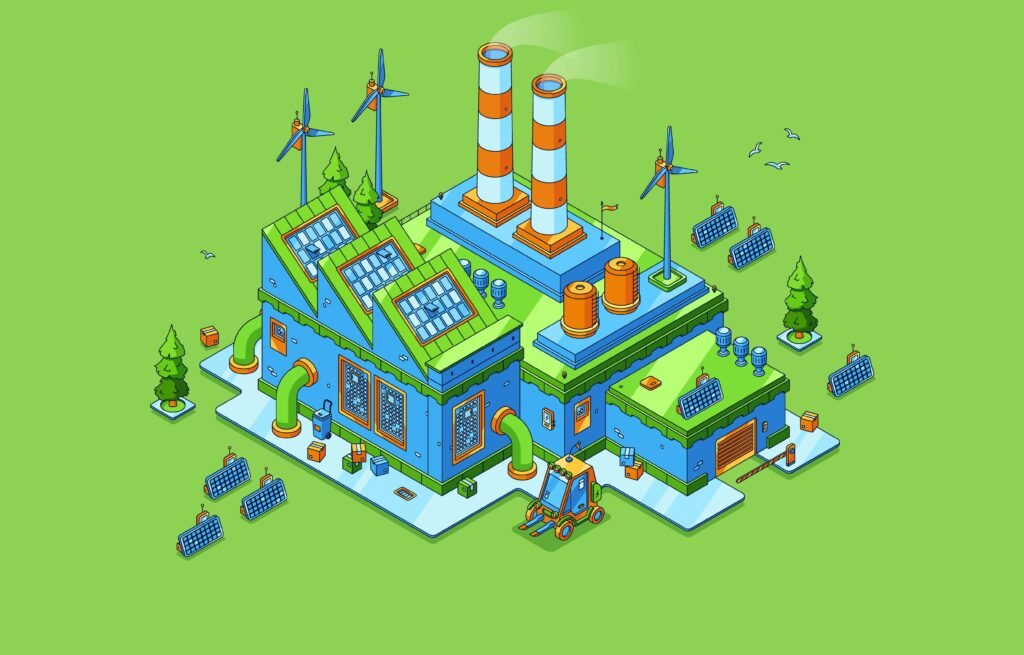Many companies aspire to have a successful manufacturing process. In this article we think that the Green Manufacturing framework might just do that.
Manufacturing being a process of turning inputs into outputs is not sustainable, because a sustainable business creates interchangeable inputs and outputs. A manufacturing plant like that would:
- Produce zero waste;
- Produce more energy than it uses;
- Make the air and water cleaner;
- Create more new materials than it uses.
Even if one of the above criteria is met it’s a sign that the company has a strong leadership in environmental issues, but reaching all of them seems impossible for most companies.
Sustainable Manufacturing Examples
Not all companies will achieve this criteria, plain and simple.
For the majority of manufacturers the path to becoming truly sustainable is challenging due to various roadblocks, but for the ones that have achieved it, the framework turned out to be very beneficial.
What is Green Manufacturing?
Green Manufacturing represents an approach that provides a dynamic, proven, and successful approach to going green and all that is done by improving the manufacturing process.
We should also note that there is no accreditation involved for implementing the Green Manufacturing framework. Still the manufacturers use it to track their progress and share their results.
Green Value Stream Approach
If we look at the term Lean & Green, they interpret waste in different ways.
For example: Lean – interprets waste from the customer’s perspective
Green – interprets waste from the enviroment’s perspective
The rest of the framework is the same for both Lean and Green making it familiar to manufacturers and easy to apply in practice.
Lean (customer’s perspective):
- Defects
- Excess processing
- Inventory
- Movement
- Overproduction
- Transportation
- Waiting
Green (environment’s perspective):
- Emissions
- Energy
- Biodiversity
- Materials
- Transportation
- Water
- Waste to landfill
The best part is that the same frameworks used for lean, we can use in Green as in (Define, Measure, Analyze, Improve, Control).
Benefits of Green Manufacturing
Many companies who have gone in this direction report significant economic benefits and there is still the opportunity for other businesses to see these benefits for themselves.
A study between 1970 and 2014 has proven that companies who work on their ESG(environmental, social, governance), nearly half of them reported better financial returns.
Cost Savings
The cost can be reduced in different ways:
- By reducing used raw materials and resources for the final product
- Energy saving
- Pollution reduction
- Economical driving
- Raw material reuse
Increasing Customer Loyalty and Attraction
In recent years customers have become greener, so they rely on responsibility, trustworthiness, and a good reputation because their expectations from companies have also risen. If companies want to keep current customers and attract new ones they should make their products greener.
Improved Employee Engagement and Retention
Employees want to work in an environment where they feel valued.
If you want to keep the team functional you should make employee engagement a priority, that’s what implementing Lean & Green does.
Innovation And Development Of New Technologies
Going green will push you to be more innovative and pursue new technologies and ways to make things better.
If you use technologies to track your OEE, then you will use less resources to produce the same product.
Increased Profit And Shareholder Value
The profitability, although proven, still depends on the company’s ability to integrate the best sustainability approaches. If the company did that, according to Bob Willard (international renowned leader in sustainability) it could improve its profit from 51% to 81% within three to five years.
Integrating Green Manufacturing Into Your Workflow
Sustainability won’t pass, it is here to stay. The good part about this framework is that you can use it either as a standalone approach or you can integrate it with already existing efforts.




